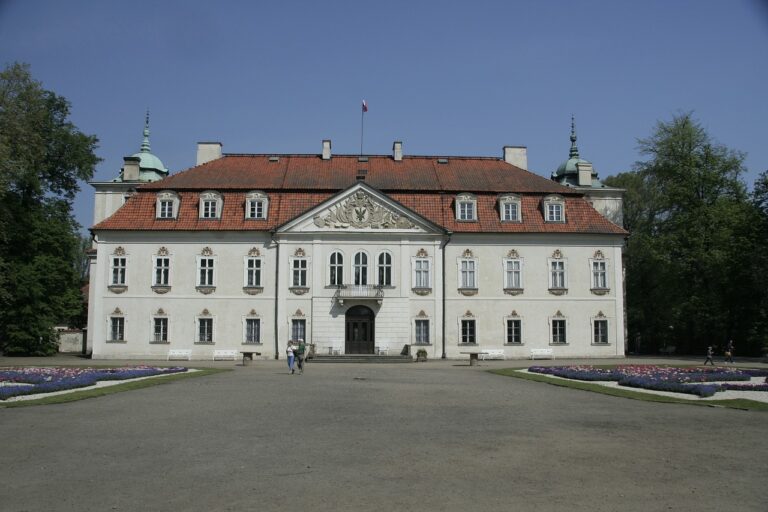Western Mazovia – Sochaczew, Łowicz, Arkadia, Nieborów
Western Mazovia together with the Kampinos Forest lies almost in the middle of the Poland. The Mazovian landscape – a sandy roads, willows, meadows with poppies and cornflowers – through associations with Chopin’s music has grown to become a national symbol. Such landscapes happen here only away from crowded main roads – that’s why it’s worth driving side roads. In the forests, ravines and swamps of the Kampinos National Park, you can face moose during the hike. Wonderful nature of the forest, folklore, wonderful parks, mansions, historical churches, museums – from historical to folk.
Sochaczew – located on the high eastern bank of the Bzura. According to tradition, in the local Benedictine monastery, now non-existent, Bolesław Krzywousty died in 1138. The present not very attractive appearance of the city owes to history: near Sochaczew from 9 to 20 September 1939 the Battle of the Bzura took place – one of the largest battles of the Polish defensive war.
Łowicz – a small, nice town, worth a slightly longer stop. Łowicz owed its former splendor to the archbishops of Gniezno, to whom it belonged from the 12th century.
During the interregnum, the primate in power resided in Łowicz. The period of prosperity ended with the Swedish invasions, the city was destroyed. Then the Principality of Łowicz was reactivated by the Tsar for a while.
Around the Old Market Square there are historical tenement houses erected from the 16th to the 18th century, often rebuilt. In the northern frontage, the classicist town hall of the 19th century stands out.
Łowicz, with numerous seats of the clergy: the court of the deans of the collegiate church, the curia of vicars, canons, certainly could have served Ignacy Krasicki as a model for “Monachomachia” – satirical works mocking smaller and larger weaknesses of the servants of the Church.
We also recommend a visit to the beautiful open-air museum – museum of the Łowicz Village.
Arkadia – “the land of happiness and peace” – is one of the most beautiful parks in Poland. This very romantic place was created by Princess Helena Radziwiłłowa in 1778, the landscape park was designed by an outstanding architect of the era – Szymon B. Zug, and at the beginning of the 19th century, several interesting buildings were added by E. Ittar. Through the park full of old trees flows the river Skierniewka, forming an elongated pond with the Island of Feelings, where flowers were laid on the altars of love. Of the preserved buildings, attention is drawn to the Temple of Diana, the House of the High Priest and the House of margrave with the Greek Arch adjacent to the building and one of the most beautiful buildings – the Gothic House, also called the Tabernacle of Misfortune and Melancholy.
Nieborów – once the palace belonged to the Radziwiłł family, although originally, in the 18th century, it was erected for the primate Michał Radziejowski by Tylman of Gameren. After World War II, the residence was taken over by the state. Today, Nieborów is one of the most beautiful magnate residences in the country. The impressive, well-kept building with a sand façade, with a mansard roof and two alcove towers has decorative tympanums with bas-reliefs supporting the coat of arms tortures. You can see here, among others, a collection of Roman excavations, several thousand 18th-century patterned ceramic tiles on the staircase, impressive size of the venetian geographer Coronelli, furniture and objects from the era, paintings and decorative majolic stoves. Behind the palace there is a French-style park with geometrically trimed shrubs, trees and a linden alley, which is
decorated with sculptures, columns and sarcophagi. Behind the canal begins a picturesque park in the English style.

